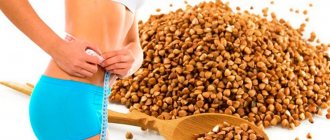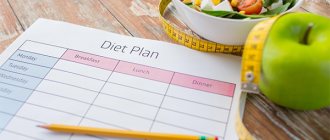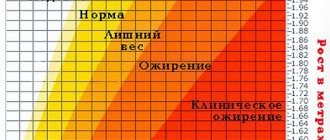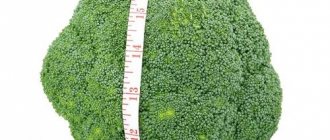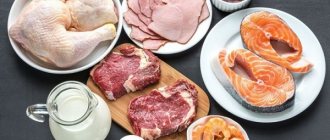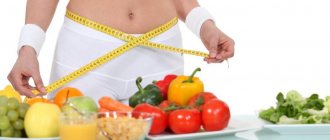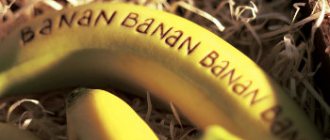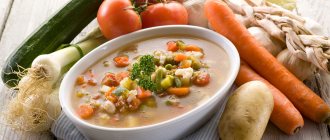The astronaut diet is one of the most effective modern diets. The name of this weight loss method has nothing to do with the diet of a real astronaut. Her diet does not include any tubes or freeze-dried foods. The diet is based on calorie restriction.
It is suitable for those who cannot live without meat and do not want to exhaust themselves with training. The diet contains complete animal protein and few carbohydrates. At the same time, you do not need to perform any mandatory physical exercises to lose weight. The duration of stay on this diet can be from 10 to 20 days, which depends on the initial weight of the person losing weight and his willpower.
What is the essence of the astronaut diet?
The essence of the diet is to adhere to two basic principles.
- Reducing the number of calories consumed.
- Increasing the amount of protein in the diet while greatly reducing carbohydrates.
During a weight loss course, fat is burned, but muscle mass remains unchanged. This is due to the fact that the body spends much more energy on the digestion of protein foods than on the absorption of carbohydrates, which contributes to the rapid loss of fat mass.
It is assumed that in 1 day of the program 1 kg of excess weight is lost
If you exit this nutrition system correctly, you can maintain the result for a long time. It is these factors that distinguish the astronaut diet from other similar restricted diets.
We evaluate the positive aspects and unfavorable consequences
Before you go on a diet, you need to weigh the pros and cons many times, and only then act. When the issue concerns health, and any dietary restriction has an impact on health in the first place, let’s follow this wise, time-tested advice. To assess the potential benefits and possible negative consequences of the diet, we suggest studying all its pros and cons .
Advantages:
- a weight loss system tested and proven in practice by many who have lost weight;
- helps in urgent situations when you need to quickly get rid of extra pounds, both large and small;
- you don’t need to spend a lot of time in the kitchen and endlessly cook something: the diet is very limited and involves only basic culinary processing of food, mainly boiling and frying without oil;
- the diet consists of simple and inexpensive products that can be bought in almost any store.
Flaws:
- very strict diet;
- lack of diversity;
- a sharp restriction of fats and carbohydrates can lead to problems with the hormonal system, intestines, cause hypoglycemia, apathy, depression, dizziness and headaches;
- Difficulty in following, the diet requires a lot of willpower;
- limiting the intake of vitamins and minerals.
Cons of the diet
Despite all the undoubted advantages, this method also has significant disadvantages. Firstly, this is a monotonous menu that quickly gets boring. Secondly, during a diet, the body loses a large amount of calcium. In most cases, dizziness and nausea may occur.
The lack of carbohydrates and fats can negatively affect the functioning of many organs, including the gastrointestinal tract, kidneys, liver, as well as the condition of hair, skin and nails.
Doctors and nutritionists also have a lot of complaints about the astronauts’ diet. For example, too much protein consumed in the absence of carbohydrates and fats. An excess of such food greatly slows down its absorption, and only a completely healthy stomach can digest such an amount of protein. For others, this diet is contraindicated.
When you lose weight, your body volume decreases and your skin begins to sag.
Another disadvantage is the rapid weight gain. This is due to the fact that many people begin to consume large amounts of carbohydrates, which contributes to the return of extra pounds.
An unbalanced diet leads to a lack of vitamins and microelements in the body, so while following a diet it is worth taking a vitamin-mineral complex.
In addition, with such rapid weight loss, the skin may sag, which is unlikely to please you if you are striving for a slim and beautiful body.
READ ALSO: Porridge diet: Simple, Tasty and Healthy!
What are the contraindications?
The astronaut diet has many contraindications, which you need to familiarize yourself with before choosing this method as suitable for weight loss. So, people will have to use a different weight loss scheme:
- in old age;
- under 16 years of age;
- involved in sports on a regular basis;
- whose work activity is associated with physical activity;
- those who have recently undergone surgery and are undergoing a rehabilitation period;
- having an allergic reaction to chicken meat and fermented milk products;
- with disorders in the endocrine, digestive and cardiovascular systems.
Also, the features of the diet imply the need for pregnant women and women breastfeeding to refuse to lose weight.
Basic principles and rules for better results
The diet of astronauts involves not only strict adherence to the proposed diet, but also adherence to certain rules and principles.
- This is a protein diet, which involves an almost complete absence of carbohydrates and fats in the diet.
- Before the diet, it is necessary to carry out a preparatory period, during which you need to gradually reduce your carbohydrate intake.
- The daily diet is divided into 4 meals. When you feel hungry, you are allowed to drink a glass of low-fat kefir.
- It is imperative to remove any fats, potatoes, all confectionery products, sweet fruits, sausages, juices and nectars, honey and premium bread from the diet. Salt, sugar, all spices and any other food additives are prohibited.
- The volume of portions is not specified separately. You are allowed to eat as much as you need so as not to feel hungry, but sticking to the daily menu. However, it does not change, but remains the same for all days of the course.
- To remove toxic substances from the body, you need to drink a large amount of ordinary water without gas, about 1.5–2 liters.
- The diet is designed for 20 days, but if you have no more than 10 kg of excess weight, then the program can be calculated for 10 days.
- The diet of this nutritional system does not include sports due to its scarcity. Fitness activities are allowed only after completing the course.
- It is important to exit the diet correctly and gradually, otherwise maintaining the results is impossible.
- You should not stick to this diet for longer than the prescribed 20 days. It is advisable to repeat the course no earlier than after a year.
There are very few permitted foods in the diet. These include:
- kefir;
- tea or coffee without sugar or other additives;
- low-fat cottage cheese;
- eggs;
- bouillon;
- boiled chicken without skin;
- fish or other types of dietary meat.
Photo gallery: foods that are allowed to be consumed
Kefir with a fat content of no more than 1% Eggs are an integral part of breakfast Boiled chicken should be eaten without skin and no more than half the carcass per day You should only drink black coffee without sugar or sweeteners Low-fat cottage cheese can be a good dinner
Adviсe
You can notice weight loss without deteriorating your health only if the following recommendations are strictly followed:
- Only absolutely healthy people can follow this nutritional system. It is advisable to consult a nutritionist or therapist before following it. If there are contraindications, you need to pay attention to other methods of eliminating excess weight.
- Rapid weight loss leads to loss of skin elasticity, resulting in stretch marks and wrinkles. To prevent this, it is important to do peelings, wraps and apply moisturizer.
- You should refrain from dieting during a session or vacation, as limited nutrition can cause a loss of strength and reduce mental activity. You should also reduce physical activity, but it is acceptable to visit the pool or perform Tibetan hormonal gymnastics.
- Throughout the weight loss period, it is important to take multivitamins to replenish nutrients.
- You should drink up to 2-2.5 liters of pure water without gases per day to remove harmful substances from the body.
- In order for the results to last for a long time, it is important to exit the diet correctly.
- In case of failure, you need to take a month break from the diet and then repeat it.
Diet for 20 and 10 days
The point of the diet is to eat the same food for the entire duration of the course. The menu cannot be changed.
Important! If your health worsens - dizziness, decreased performance or apathy - you should immediately stop the diet and seek help from a doctor.
If at the beginning of the diet you understand that it will be difficult to stick to such a menu for almost 3 weeks, then you should reduce the duration of the diet to 10 days.
READ ALSO: Brazilian Diet: getting ready for the beach season!
Table: option 1
| Breakfast |
|
| Dinner |
|
| Afternoon snack |
|
| Dinner |
|
Table: option 2
| Breakfast |
|
| Dinner |
|
| Afternoon snack |
|
| Dinner |
|
Some additions to the menu
If strict conditions are strictly followed, you can count on a claimed loss of 20 kg. Naturally, each retreat will cost a general reduction in the expected effect. The individual characteristics of the body of someone losing weight play an important role; some achieve maximum results, others do not. But a mindset of success is required, otherwise it’s better not to start.
Based on the experience of those who have lost weight on the “cosmonaut diet,” we can conclude that without loss of effectiveness, we can completely replace coffee with tea (without milk or sugar), boiled chicken with boiled lean fish (pollock and others).
Express diet
There is also a more gentle version of this diet, which is suitable for those who cannot withstand a course lasting 20 days. The duration of this program is only 2 days. During this time, an average of 2.5 kg of excess weight is burned. You should drink 2 liters of plain still water every day.
Table: menu for express diet
| Breakfast | 150 ml of tea or coffee with 20 g of milk powder dissolved in the drink. |
| Dinner |
|
| Dinner |
|
Sunday
For breakfast, eat yogurt (3.5), then for lunch - mushroom soup (15), for an afternoon snack - boiled tongue with tea and grapefruit (6.5), and for dinner you should eat any baked fish with eggplant (5), for side dish prepare green beans (3) and carrots (7). The final result is 40 points.
It is worth recalling that vegetables can be consumed in unlimited quantities, and for all other products the concept of “portion” is used. So, for all meat or fish dishes, the serving is 200 g, the same applies to cottage cheese; a serving of cheese is 50 g; and scrambled eggs or an omelet should be made from two eggs.
If you want to follow the diet of American astronauts from Leo Boqueria for 10 days in a row, the diet for the next three days could be as follows:
Day 8 - after waking up, drink a cup of unsweetened tea or coffee, eat a piece of boiled sausage and a scrambled egg. For lunch, eat a salad of squid and pike perch, cooked in breadcrumbs, and drink unsweetened tea. For an afternoon snack, have an orange snack, and in the evening take natural yogurt, baked chicken breast and one lightly salted cucumber.
Day 9: For breakfast, drink unsweetened tea, eat cottage cheese and two boiled eggs. For lunch, mushroom salad, fried pork, and coffee without sugar are suitable. For an afternoon snack, take an apple, and for dinner, eat boiled chicken and cabbage, wash it down with a mug of tea.
Start day 10 with a cup of unsweetened tea, two boiled eggs and a piece of cheese. For lunch, eat fresh tomatoes and cucumbers, grilled salmon, and drink a mug of unsweetened tea or coffee. For an afternoon snack, have a handful of olives, and in the evening for dinner, take two tomatoes, boiled fish and natural yogurt.
Recipes for dishes included in the diet
The dishes included in the astronauts' diet are easy to prepare. Let's give a few examples.
Egg in a bag
Ingredients:
- egg;
- water.
To prevent the shell from bursting during cooking, the water must be salted.
- Place the egg in cold water.
- After boiling, cook for another 4 minutes.
- The egg “in the bag” is ready!
Protein shake based on kefir and raspberries
Ingredients:
- raspberries - 100 g;
- milk - 200 ml;
- kefir 1% - 200 ml.
- Mash the raspberries.
- Place all ingredients in a blender and blend.
The cocktail is ready!
Photo gallery: ingredients for making a cocktail
You need to add a handful of berries to a protein-vitamin cocktail. It’s better to take low-fat milk. Kefir for a cocktail is suitable 1%
Boiled chicken
Ingredients:
- chicken carcass - 1800 g;
- water - 3 l.
- We clean the chicken, rinse thoroughly, remove the skin.
- Place in a saucepan, add water and cover with a lid.
- After 15 minutes, collect the foam, reduce the heat and close the lid again.
- Cook for another 40 minutes and remove from heat.
- Cut into pieces.
The chicken is ready!
Garnish chicken breast with herbs and serve
How to calculate points
The diet for astronauts includes three stages - starting, main and supporting. The difference is in the number of points, which represent the formula for the carbohydrate content per hundred grams of a particular product. Depending on the goal, to lose weight, maintain weight or gain weight, you need to follow a diet corresponding to the number of points:
- To lose weight – 40 points;
- To maintain weight – 60 points;
- To get better – from 60 points and above.
There are several ways to correctly calculate points when eating according to the astronaut diet: information printed on food packaging, developed tables and applications for gadgets.
Using the table as an example, you can familiarize yourself with the classification of foods recommended by the diet. Their odds will be low.
| Products | Qty | Points |
| Bread and cereals | ||
| White bread | 100g | 48 |
| Black bread | 100g | 40 |
| Semolina porridge | 150g | 40 |
| Oatmeal porridge | 250g | 24 |
| Buckwheat porridge | 250g | 24 |
| Pasta, noodles | 250g | 32 |
| boiled rice | 250g | 44 |
| Cornflakes | cup | 23 |
| Meat | ||
| Boiled meat | 100g | 0 |
| Lamb, pork tenderloin | 100 | 0 |
| Natural chop | 100 | 0 |
| Chicken (var.), goose, duck, turkey, rabbit | 100 | 0 |
| Meat fried in breadcrumbs | 100 | 5 |
| Meat with flour sauce | 100 | 6 |
| Heart | 100 | 1 |
| Brain | 100 | 12 |
| Veal liver | 100 | 4 |
| Beef liver | 100 | 6 |
| Steak | 100 | 1 |
| Sausages | 100 | 1 |
| Sausages (all varieties) | 100 | 1 |
| Ham | 100 | 1 |
| Beef stew | 100 | 5 |
| Beef stew | 100 | 10 |
| Veal goulash | 100 | 2 |
| Pork goulash | 100 | 9 |
| Eggs in any form | thing | 0,5 |
| Fish, seafood | ||
| Boiled fish | 100g | 3 |
| Fish fried in breadcrumbs | 100 | 12 |
| Smoked salmon | 100 | 0 |
| Sardines | 3 pcs | 0 |
| Acne | 100 | 1 |
| Crabs | 100 | 2 |
| Salted herring | 100 | 2 |
| Smoked herring | 100 | 4 |
| Fish in tomato | 100 | 6 |
| Mussels | 100 | 5 |
| Oysters | 100 | 7 |
| Squid | 100 | 4 |
| Lobster | 100 | 1 |
| Shrimps | 100 | 0 |
| Scallops | 100 | 2,5 |
| Dairy | ||
| Milk | 250 | 6 |
| Kefir, yogurt without sugar | 250 | 13 |
| Cheese of different varieties | 100 | 0,5 – 2 |
| Cottage cheese | 100 | 3 |
| Sour cream | 200 | 10 |
| Cream | 2st. spoons | 1 |
| Butter | 20 | 1 |
| Vegetable oil | 20 | 0 |
| Margarine | 20 | 0 |
| Mayonnaise | 20 | 1 |
| Condensed milk | 20 | 10 |
| Soy milk | 250 | 1,2 |
| Tofu (soy cheese) | 100 | 2 |
| Vegetables | ||
| Fresh cucumber salad | 100g | 6 |
| Boiled cauliflower | 100 | 6 |
| Fresh cabbage | 100 | 5 |
| Sauerkraut | 100 | 3 |
| Provencal cabbage | 100 | 3 |
| Green beans | 100 | 8 |
| Vegetables stewed in rast. oil | 100 | 5 |
| Carrot | 100 | 5 |
| Mushrooms | 100 | 6 |
| Pumpkin | 100 | 10 |
| Eggplant | 100 | 3 |
| Zucchini | 100 | 4 |
| Daikon (Chinese radish) | 100 | 1 |
| Fresh tomato (medium) | 1 piece | 6 |
| Canned tomato | thing | 4 |
| Green pepper | thing | 9 |
| Fresh cucumber | thing | 5 |
| Pickled cucumber | thing | 2 |
| Leek | thing | 11 |
| Bulb onions | thing | 8 |
| Green onion (chopped) | cup | 5 |
| Beet | thing | 6 |
| Radish | 6 items | 0,5 |
| Corn | cob | 15 |
| Lentils | 1/2 cup | 14 |
| Soya beans | 1/2 cup | 6 |
| Chickpeas (lamb peas) | 1/2 cup | 16 |
| Boiled potatoes | 100 | 23 |
| Fried, baked potatoes | 100 | 20 |
| Mashed potatoes | 100 | 30 |
| Potato chips | 10 pieces | 10 |
| Soups | ||
| Chicken and meat broth | 500 | 0 |
| Tomato soup | 500 | 17 |
| Vegetable soup | 500 | 16 |
| Pea soup | 500 | 20 |
| Goulash soup | 500 | 12 |
| Mushroom soup | 500 | 15 |
| Solyanka meat team | 500 | 22 |
| Green cabbage soup | 500 | 12 |
| Sweet | ||
| Granulated sugar | teaspoon | 26 |
| Coffee cake | 150 g | 65 |
| Chocolate cake | 150 g | 70 |
| Cream cake | 150 g | 62 |
| Cake without filling and cream | 150 g | 31 |
| Fruit cake | thing | 25 |
| Pancake | thing | 8 |
| Tea cookies | 100 g | 12 |
| Various creams | 50 g | 15 |
| Fruit ice cream | 100 g | 25 |
| Ice cream | 100 g | 22 |
| Lollipops | 100 g | 70 |
| Milk chocolate | 100 g | 54 |
| Bitter chocolate | 100 g | 23 |
| Raisin | 150 g | 18 |
| Marmalade | 100 g | 30 |
| Candies | 100 g | 75 |
| Honey | 50 g | 15 |
| Jam | 100 g | 12 |
| Fruits, Berries, Nuts | ||
| Apple | thing | 18 |
| Orange | thing | 17 |
| Apricot | thing | 3 |
| Avocado | thing | 5 |
| Banana (small) | thing | 21 |
| Mandarin | thing | 6 |
| Peach | thing | 9 |
| Nectarine | thing | 13 |
| Lemon | thing | 6 |
| Kiwi | thing | 9 |
| Plum | thing | 8 |
| Figs (fresh) | thing | 8 |
| Pear | thing | 25 |
| Pineapple (chopped) | cup | 17 |
| Watermelon (sliced) | cup | 11 |
| Melon (sliced) | cup | 12 – 15 |
| Dried apricots | cup | 80 |
| Blackberry | cup | 12 |
| Blueberry | cup | 16 |
| Cherry | cup | 16 |
| Cranberry | cup | 8 |
| Blueberry | cup | 21 |
| Black currant | cup | 19 |
| Boiled prunes | 1/2 cup | 39 |
| Various berries | 200 g | 20 |
| Raspberries | 200 g | 17 |
| Grape | 200 g | 18 |
| Walnut | 100 g | 56 |
| Peanut | 2 tbsp. spoons | 1,8 |
| Hazelnut | 2 tbsp. spoons | 1,2 |
| Pumpkin seeds | 2 tbsp. spoons | 2,4 |
| Sunflower seeds | 2 tbsp. spoons | 1,5 |
| Pine nuts | 2 tbsp. spoons | 1,7 |
| Almond | 100 g | 11 |
| Beverages | ||
| Apple juice | 250 g | 10 |
| Orange juice | 250 g | 28 |
| Grape juice | 250 g | 10 |
| Tomato juice | 250 g | 10 |
| Lemon juice | 250 g | 20 |
| Grapefruit juice | 250 g | 20 |
| Mineral water | 250 g | 0 |
| Tea, coffee without sugar | 250 g | 0 |
| Cocoa with milk | 150 g | 26 |
| Natural wine (dry) | 250 g | 1 |
| Beer | 250 g | 12 |
| Liquor | 60 g | 18 |
| Fruit water | 250 g | 20 |
| Compote | 250 g | 30 |
| Whiskey, vodka, cognac, rum, tequila | 150 g | 1 |
| Spices, seasonings | ||
| Cinnamon | 1/2 teaspoon | 0,3 |
| Coconut | 2 tbsp. spoons | 0,8 |
| Ground chili pepper | 1 teaspoon | 0,5 |
| Vinegar | 1 tbsp. spoon | 2,3 |
| Apple cider vinegar | 1 tbsp. spoon | 1 |
| White wine vinegar | 1 tbsp. spoon | 1,5 |
| Red wine vinegar | 1 tbsp. spoon | 0 |
| Mustard | 1 tbsp. spoon | 0,5 |
| Cranberry Sauce | 2 tbsp. spoons | 13 |
| Capers | 1 tbsp. spoon | 0,4 |
| Garlic | clove | 1 |
| Ginger root | 1 tbsp. spoon | 0,8 |
| Horseradish | 1 tbsp. spoon | 0,4 |
| Ketchup | 1 tbsp. spoon | 4 |
| Black olives | 5 items | 0,7 |
| Green olives | 5 items | 2,5 |
| Soy sauce | 1 tbsp. spoon | 1 |
| Tahini | 1 tbsp. spoon | 2,5 |
| Barbecue sauce | 2 tbsp. spoons | 3,6 |
| Sweet and sour sauce | 1/4 cup | 15 |
| Tomato sauce | 1/4 cup | 3,5 |
| Tartar sauce | 2 tbsp. spoons | 1 |
| Hollandaise sauce | 2 tbsp. spoons | 0,3 |
| Meat gravy (broth based) | 1/4 cup | 3 |
| Spices | Art. spoon | 0,1 |
According to the table, fruits count from 3 to 68 units, vegetables - from 2 to 16, dairy products - from 28 units.
- During the initial stage (1-2 weeks) of the diet, your menu should be composed based on 20 carbohydrate points.
- During the main period (about 6 weeks) - no more than 40 units per day.
- And during the final stage (1 week) – 60 points.
There are also mandatory exceptions in the diet of American astronauts. The nutritional rules indicate that you can easily part with those foods that are rich in carbohydrates. During all three stages of the diet, the following are completely excluded: confectionery, baked goods, carbonated drinks, fruits high in fructose, wine and beer, wheat and corn, peas, potatoes and beets, pasta and sweet dairy products. Surprisingly, strong alcohol is not prohibited.
Exit from the astronaut diet
It takes about two weeks to quit the diet. It is necessary to gradually increase the amount of carbohydrates. This process occurs differently for everyone. If you start gaining weight again, you should again reduce the amount of carbohydrates you consume so as not to lose results. At this stage, it is allowed to include bread, vegetables and fruits in the diet.
READ ALSO: Sunglasses.
It is necessary to eat properly, gradually increasing the amount of calories to the daily requirement, but avoid too fatty or fried foods.
You should control your fiber intake, since over a 20-day period the body simply gets used to such food.
Cosmically delicious: Astronauts dream of a Russian delicacy, but are forced to drink “Yuppie”
Black caviar, dry borscht, freeze-dried omelet with mushrooms... Did you guess that this is part of the diet of our astronauts in orbit? Although not every product can be taken with you into space, their menu is quite rich. American astronauts are even a little jealous and literally hunt for one of the dishes of their Russian colleagues, constantly trying to exchange it for products from their diet.
First taster in space
The first person to dine in space was our famous compatriot Yuri Gagarin (there is no need to remind what exactly he is famous for). On his first flight, he took tubes of chocolate and meat with him. After Gagarin, German Titov : in August 1961, the cosmonaut was equipped not only with the already proven meat and chocolate tubes, but also with liver pate, vegetable soup and blackcurrant juice.
After returning to Earth, Titov complained that this set was not enough to completely satisfy the appetite of an adult man. Since then, space nutrition has been constantly improved. For example, several hundred types of different foods and dishes are now available on the ISS!
How cottage cheese became a valuable currency
Food in tubes in orbit is no longer common among us - this packaging has been replaced by vacuum bags. By the way, it turned out to be quite economical, since thin plastic containers weigh almost nothing, which means more products can be sent to the ISS. However, they have not completely abandoned tubes - for some dishes they are indispensable: for example, for sauces.
“Space” food in Russia is prepared mainly at the Biryulevsky experimental plant. Here they cook soups and porridges, “conjure” with curds and desserts - and immediately dry them, then pack them in a vacuum. Second courses are most often placed in cans.
The diet of a Russian cosmonaut is designed for 16 days, during which breakfast, lunch and dinner dishes are not repeated. The daily ration of one person is estimated, by the way, at 30-40 thousand rubles. The menu includes black caviar, a dozen and a half different soups, bread and cookies of several types, and there are a great many options for main courses and desserts. Sometimes astronauts treat themselves to fresh fruit. Once, cosmonaut Anton Shkaplerov , having contacted the Earth, wished: “I want condensed milk!” And soon, on the next flight to the ISS, they equipped him with a surprise package: a couple of jars of condensed milk.
Juices must be included in the diet of astronauts. They are prepared at the factory by drying them - that is, turning them into powder. Freeze-dried juice retains most of the beneficial substances, and in orbit it is enough to dilute it with water to obtain a product that is practically no different from the original one.
Astronauts do not have this: approximately 70% of their diet consists of products from a regular supermarket. Of course, they have undergone special processing, but they have a whole “bouquet” of preservatives, dyes, stabilizers,
– noted the director and chief designer of the Research Institute of Food Concentrate Industry and Special Food Technology Viktor Dobrovolsky in an interview for RG. He added that many of our dishes are very much to the taste of Americans: astronauts even order additional sets with Russian ingredients. Foreigners especially like our soups.
And cottage cheese with nuts, which our cosmonauts also love, generally drives their American colleagues crazy. This product in orbit has long become a kind of currency. Queues line up behind it - the cottage cheese is exchanged for delicacies. This secret was revealed by cosmonaut pilot, hero of Russia Oleg Artemyev at an online meeting with participants of the Mashuk-2020 forum.
In fact, this (cottage cheese with nuts - ed.) is the most delicious. We consider it as currency. For this cottage cheese, you can exchange shrimp, crabs from the Americans, something that we don’t have. Or keep it, don’t eat it, and then, when your colleague has a birthday, you give him all this cottage cheese, and this is the best gift.
"Olivier" in space? Easily!
But Russian space cuisine is not famous for cottage cheese alone. Cosmonauts are regularly pampered with dishes such as beef azu, chakhokhbili, meat broth with noodles, meat in jelly and white sauce. Every year at the Biryulyovsky plant they come up with something new for the diet - for example, an omelet with mushrooms, pumpkin-cheese borscht, pike perch pilaf...
The astronauts themselves often engage in cooking: once on New Year’s Eve they prepared Olivier salad right on the ISS! We took a set of canned cucumbers, onions and smoked sausage, and added peas recovered from sublimation to it. Then we got potatoes from the canned pork and potatoes. The boiled egg was replaced with pieces of omelette, the ingredients were mixed in a bag - the result was a cosmic and quite tasty salad.
By the way, astronauts are allowed to get an additional set of products in addition to the main set of products. Usually, it includes dishes that are quite familiar to “earthlings” - canned food of various types, dried meat, smoked sausage, chocolates and other non-perishable sweets and even ketchup.
The astronauts' menu necessarily includes cheese (most often with the addition of herbs or garlic), as well as other calcium-rich foods. It is this microelement that the body needs more than in earthly conditions, due to the influence of weightlessness.
What about them?
NASA astronauts, like ours, first ate food from tubes (by the way, unlike the Russians, they were not provided with food during their first flights, believing that they could endure a short time in space before landing). In addition, some dehydrated (i.e. dried) food, usually compressed into small cubes, was added to the tubes.
All these methods greatly changed the taste of the products, and not for the better. This changed when food for astronauts began to be frozen first, and only then dehydrated and vacuum packed. The range of dishes was also expanded: it included, for example, turkey meat, chicken soup and seafood. The astronauts were also armed with water pistols: they used them to “shoot” inside the bag and thus restore the dish from its sublimated state.
Another breakthrough in American nutrition was made during the implementation of the Apollo program (the same one within which the first manned flight to the Moon took place). Then NASA found a way to provide hot water to astronauts, which greatly facilitated the process of recovering freeze-dried food. The Apollo crew could feast on bacon, cornflakes, beef sandwiches, chocolate pudding and tuna salad. Much later, space shuttles were equipped with original kitchens, where space explorers could cook (of course, in the “space” and not the true culinary sense of the word) and eat food.
By the way, dangerous incidents happened in orbit. In 1965, Gemini 3 pilot John Young managed to take a regular beef sandwich with him on the flight. He hid it in his suit pocket! Arriving in orbit, Young casually offered half a sandwich to his commander. After returning to Earth, the pilot received a notable beating: in zero gravity, crumbs from simple bread could get into the respiratory tract of the “gourmet” himself and his colleague, which would certainly end tragically. In general, you can take baked goods into space - but only special ones, they are prepared both for our people and for the Americans in a special way so that they do not crumble at all.
Now the astronaut menu changes frequently, but there is a certain, quite stable set of dishes. Teams of astronauts most often take with them into space pasta with meat, turkey, barbecue, seafood (both separately and as part of salads), guacamole, yogurt, cheese bread, spinach, powdered drinks such as “Yuppie” and chocolate dragees.
Side effects
Frequent adherence to such a diet contributes to an eating disorder, which is fraught with cravings for carbohydrates and sweets.
Due to severe restriction in carbohydrate consumption, ketoacidosis can develop - poisoning by the products of protein metabolism.
Another side effect may be chronic constipation. Diet is also a cause of decreased brain activity. Therefore, to maintain health, it is better to adhere to a more balanced diet.
Contraindications to compliance
You can start losing weight when you feel completely healthy. If you have recently been sick or feel unwell, wait until you are fully recovered. People suffering from chronic diseases from the list below should refrain from losing weight:
- kidney diseases;
- heart diseases;
- gastrointestinal diseases.
The astronaut diet is not suitable for pregnant or lactating women. Everyone else should visit their doctor for a consultation before starting to adhere to dietary restrictions. If no contraindications are observed, then you can start the diet as soon as possible.
Reviews and photos of people losing weight
Hi all! On this diet I lost 24 kg in 20 days. I strictly followed and stuck to it, and didn’t eat too much. Subsequently, I kept the diet similar, but included vegetable salads and yoghurts. A year and a half later, I already weigh 51 kg. Sometimes I allow myself ice cream, but I completely refuse other sweets and starchy foods. I am very happy with this result and wish everyone success!
belka1983, Bobruisk
https://otzovik.com/review_3777678.html
The astronaut diet helped the girl get rid of 24 kg in 21 days
The diet is designed for 20 days; it is strictly forbidden to sit on it any longer. Since I was losing weight for the New Year and had only 10 days left at my disposal, I cut it in half. I don't think I could have done any more. I was slim for the New Year! In 10 days I lost 8 kg! At the same time, I won’t say that I gained a lot of weight during the holidays, although the abundant feasts did not escape me. Although the diet is satisfying, it is difficult to tolerate. I often felt dizzy. When I was at the gym, my vision darkened, so I stopped playing sports during the diet. Natalya, Irkutsk.
Natalia
https://otzovik.com/review_3777678.html
Isn't this harmful?
According to reviews of the diet of American astronauts, some are seriously afraid of such protein abuse, and even believe that this can lead to the development of diabetes. Is it really? The authors of all such diets claim that ketosis is a healthy state for a person to strive for. If the diet is low in sugar and starch, the body does not receive enough glucose to supply the body's cells with energy. This pushes the liver to begin synthesizing ketones and glucose from the proteins and fats that come with food. At the same time, those fats that are stored for preservation are also used. Since all cells in the body can use ketones as energy sources and as a replacement for glucose, its synthesis is minimized. This process is called ketosis. Some people who are far from medicine confuse it with ketoacidosis. This condition occurs in patients with diabetes. It is the lack of insulin that leads to a regular increase in blood sugar. Ketoacidosis develops due to the fact that a diabetic uses a large amount of carbohydrates. But a low-carb diet, on the contrary, tries to reduce their consumption. While ketosis is a natural process for the body, ketoacidosis can lead to unpleasant consequences, even coma.
From the reviews of doctors about the diet of American astronauts, it is also possible that people began to use processed cereals and sugar relatively recently. A little over a hundred years ago, white sugar was almost not in use. There is much evidence that this product is addictive and has negative health effects. For millions of years, ancient people ate virtually the same thing: meat and fat with a small amount of plant-based, non-starchy foods. Thanks to this diet, humanity survived in harsh times, developing its capabilities. Crops rich in starch and sugar appeared relatively recently, only ten thousand years ago. In their natural form, most grains are unsuitable for food, and a person needs to learn not only to breed them, but also to process them. From an evolutionary point of view, this time interval is very short, so the human digestive system is not yet fully prepared to digest such food. Even anthropologists noted that the transition of man from hunting to agriculture had a bad effect on both the appearance of people and their health. It should be noted that some peoples continue to eat like their distant ancestors, and do not suffer from chronic diseases.
